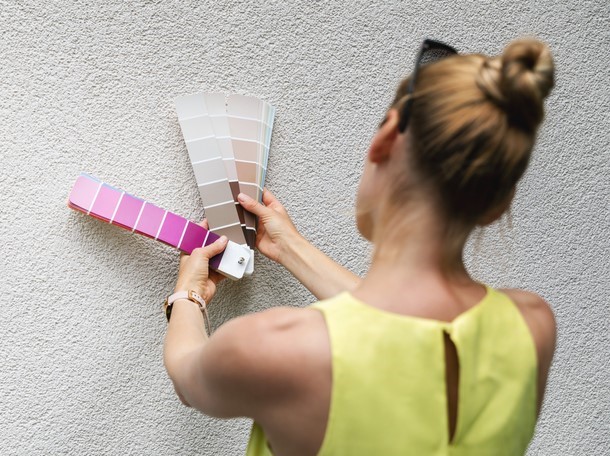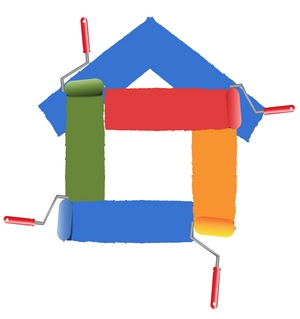Painting the whole outside of your house is a major job. But your home may not need a whole paint job. You may be able to spiff up the appearance of your home and extend the life of an entire paint job by several years with regular maintenance and some quick repairs. Whether you decide to paint a porch, the most weathered side of your house, or an outbuilding or two, the general process is the same as painting your whole house.
You’ll need to clean and prep the surface, decide what type of paint to use, and apply the paint. The best time to paint is in late spring or early Autumn on a dry day that is not too sunny. Temperatures below 40 degrees F and direct hot sun can ruin paint jobs. Inspect your house thoroughly before you paint, and take corrective action to prevent the root causes of paint failure.
We’ll hit on all the basics of exterior painting in his article, starting in this first section with how to deal with various paint problems.
Peeling
Peeling is often the result of painting over wet wood. It can also result from moisture within the house pushing its way out. If you cannot control the moisture with exhaust fans, use latex primer and latex paint. Latex allows some moisture to pass right through the paint.
Another cause of peeling is a dirty or a glossy surface. To undo the damage, all loose paint flakes must be scraped off with a wire brush and the surface must be sanded to smooth sharp edges. Bare spots should be primed before painting.
This problem looks just like its name suggests: the hide of an alligator. Paint shrinks into individual islands, exposing the previous surface, usually because the top coat is not adhering to the paint below. Perhaps the paints are not compatible or the second coat was applied before the first coat had dried. To get rid of this problem, scrape off the old paint and then sand, prime, and repaint the surface.
Blistering
Paint that rises from the surface and forms blisters is usually due to moisture or improper painting. To fix the problem, first scrape off the blisters. If you can see dry wood behind them, the problem is due to moisture. If you find paint, then it is a solvent blister and is probably caused by painting with an oilbase or alkyd-base coating in hot weather. The heat forms a skin on the paint and traps solvent in a bubble.
Wrinkling
New paint can run and sag into a series of slack, skinlike droops. This occurs when the paint you are using is too thick and forms a surface film over the still-liquid paint below. It can also happen if you paint in cold weather; the cold surface slows drying underneath. To recoat, make sure the new paint is the proper consistency and be sure to brush it out as you apply. Before doing this, though, you will have to sand the wrinkled area smooth and, if necessary, remove the paint altogether.
This is paint that has a dusty surface. Some oilbase and alkyd-base paints are designed to “chalk” when it rains. When this happens, a very fine powdery layer is removed, automatically cleaning the surface. In most cases, this is desirable. But if foundations, sidewalks, and shrubs become stained, too much chalking is occurring.
This is likely due to painting over a too-porous surface that has absorbed too much of the paint’s binding agents. A chemical imbalance in an inferior paint may also be the cause of excessive chalking. The best solution is to wash down the chalking surfaces as thoroughly as possible, then paint over them with a nonchalking paint.
This moldy growth appears where dampness and shade prevail. And, if you paint over it, it’s likely to come right through the new paint. Use a fungicide such as chlorine bleach or a commercial solution to kill patches of mildew before repainting.
Running Sags
Using a paintbrush incorrectly (e.g., too much paint on the brush) can create a wavy, irregular surface. To correct it after the paint is dry, sand and repaint surface, smoothing out the new coat to an even thickness.
Paint Won’t Dry
This is perhaps the best reason to buy high-quality paint. Prolonged tackiness is an indication of inferior paint. If you apply poor-quality paint too thickly or during high humidity, it will stay tacky for a long time. Good paint, on the other hand, dries quickly. If you think you may have an inferior paint, first experiment on an inconspicuous portion of the house.
Think you’re ready to get started? If not contact paintway today for a free quote 🙂











